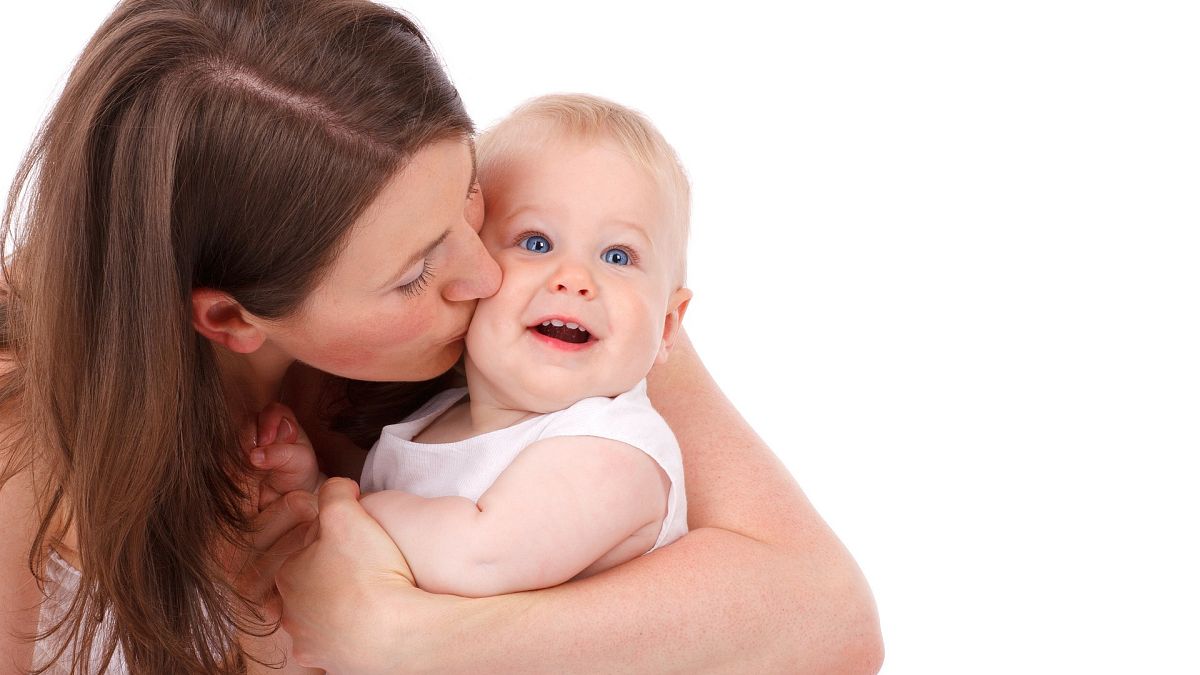According to a new study, babies are better able to recognise faces presented to their left
A new study has revealed that a young baby's ability to recognise faces is heightened when the person is standing to the youngster’s left.
The research, carried out on babies from one to six months of age, was conducted by the French National Center for Scientific Research, the French National Institute of Health and Medical Research and the French Alternative Energies and Atomic Energy Commission. It aimed to study infants' face perception because of its importance in their development.
"Faces are one of the most frequent stimuli that babies are looking at, so it’s very important for developing many abilities, such as social communication," Jessica Dubois, one of the three researchers, told Euronews.
The study also aimed to understand brain lateralisation in infants, which is when one side of the brain is more involved in processing certain stimuli than the other.
In an adult, face perception is known to be mainly processed in the right hemisphere of the brain.
The research has shown that since an early stage in life the brain's right hemisphere is more efficient than the left in discriminating faces.
In general, when a stimulus is presented to one side of the visual field, it is the opposite side of the brain that begins to process this information.
So, when a face was shown to the babies' left, the right side of the brain perceived the stimuli and was able to distinguish it correctly.
However, when the stimulus was presented to the babies' right side, the left hemisphere, which is not specialised in face perception, was not able to perceive the faces to such an extent.
In an adult, if this had been the case, the information would have been transferred to the right side to be further processed.
However, the study has found that in infants this transfer of information is not fully developed.
"In babies, the left hemisphere is incompetent in discriminating the faces and also on transmitting the information to the right side, so the right side can’t take the lead and interpret the information as it is the case in adults," explained Dubois.
Either way, despite the weak transfer of information from one hemisphere to another, Dubois explained that the evidence of lateralisation shown in the study proves that the brain carries its complex functional architecture from birth.
"Sometimes, you feel that a baby is not able to do things. But, their brain is already processing and integrating many complex information, and already at this early stage it is highly specialised like the adult brain to process stimuli like speech, faces, etc."
Still according to Dubois, the fact that we are born with these functional specialisations means that the development of these cognitive abilities is highly influenced by genetics and evolution.
The charts above shows how differently the babies' brains responded to faces presented on the left and right.
On the left chart (G), the left brain hemisphere responded similarly to faces it already knew (black line) than it did to new faces (purrple line). On the other hand, the right chart (D) shows how the right side of the brain responded differently to faces it recognized than to faces it didn't, showing a better ability in face perception.
